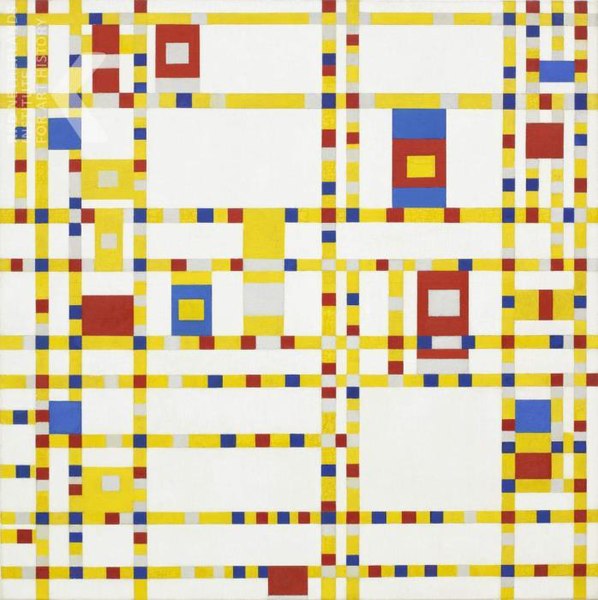5.9 NON OBJECTIVISM AND MONDRIAN
EARLY MODERN STYLES—NON-OBJECTIVISM AND MONDRIAN
Piet Mondrian
Piet Mondrian (1872-1944) was not associated with the Futurists. He was a Dutch pioneer of non-objective art. Born in Amersfoort, Utrecht, he studied painting at the Amsterdam Academy on and off between 1892 and 1897. His first works were academic landscape and still life paintings. In 1909 a major exhibition of his work was held in Amsterdam and he also joined the Theosophic Society. The Theosophs believed that they could be in contact with a higher artistic and spiritual dimension which would eventually replace religion. Artists who followed Theosophic teachings were against materialism and skepticism and instead sought for what they saw as an approaching synthesis of science, religion and art.1 For them, color was the way to express the soul. His Evolution Triptych, painted in 1911 is an example of his Theosophic philosophy. The figure on the left is an earthly or terrestrial figure. The one on the right is sidereal or astral, or of the stars, and the one on the center is divine. But even though he is seeking for a new way to express his thoughts, it is still not abstract art.
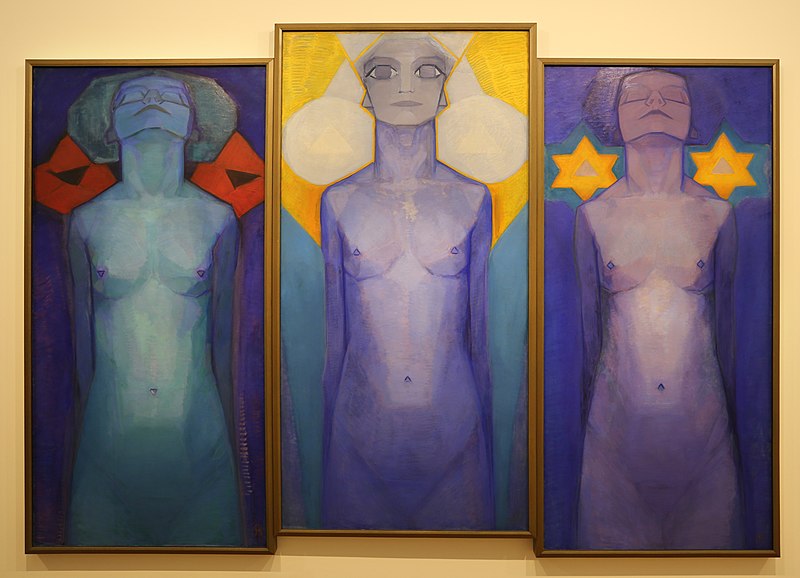
Mondrian experimented with Cubism after seeing the works of Braque and Picasso in Amsterdam and in 1911 he decided to move to Paris. He was visiting Amsterdam when World War I broke out and he was unable to return to Paris. He remained in the Netherlands during the war and his work became even more nonobjective. In 1917 he was one of the founding members of De Stijl, which means The Style. This type of art uses only horizontal and vertical lines and the colors red, yellow, black, blue and white. They believed that they should only use red, yellow and blue because only red, yellow and blue, which are the primary colors, can be used to make all other colors. De Stijl artists believed that they could create anything by manipulating horizontal and vertical lines.
This is when Mondrian began to move away from the object to non-objective representation. For centuries artists had tried to represent what they saw around them using paint and canvas. They tried to create real space, a real view through a window. Now with Cubism and pointillism fresh on his mind, Mondrian sought to remove the object completely. He began slowly. Look at the next few images of trees and see how the tree begins to disappear. “If one conceived of these forms as increasingly simple and pure, commencing with the physical visible forms of appearance, then one passes through a world of forms ascending from reality to abstraction. In this manner one approaches Spirit, or purity itself.” —Piet Mondrian.3
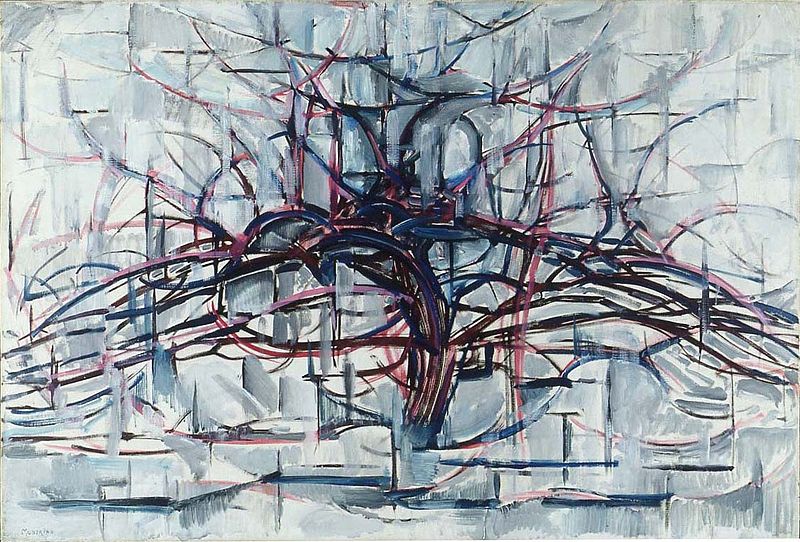

In the beginning of this process Mondrian and other artists looked at an object, like a tree, or a person, or a city, and tried to find ways to depict them with simple lines, less light and shadow, and less and less color. Eventually their work did not even begin with a real, visible object, but instead sought to convey the essence of it without gradually making it less and less “real.”
Composition in Brown and Gray by Piet Mondrian 6:03
If you receive an error with the link above, use the following link https://www.khanacademy.org/humanities/art-1010/cubism-early-abstraction/de-stijl/v/mondrian-composition-no-ii-with-red-and-blue-1929

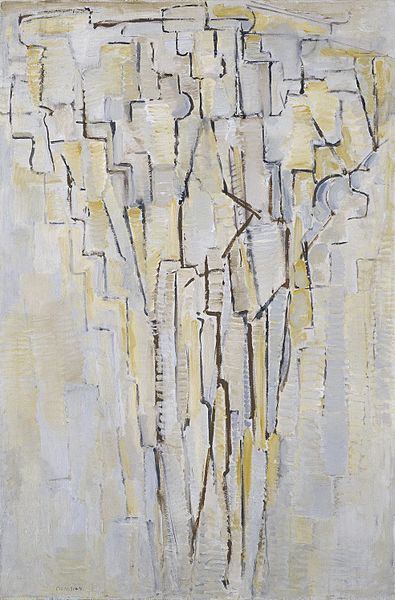
By 1917 Mondrian moved to a new style which he called Neo-Plasiticism. He moved even further from painting illusions of reality and painting forms in believable spaces. Mondrian and other modern artists wanted to move painting past natural depiction to focus on the properties of paint and the basic elements of art such as line and color. He wanted to know what the color red did on the canvas. Did it move forward, or did it pull the viewer backward into space. Did the black lines form a grid that kept the color inside, or did the color hover on top of the black lines? Which color carried more “weight”?

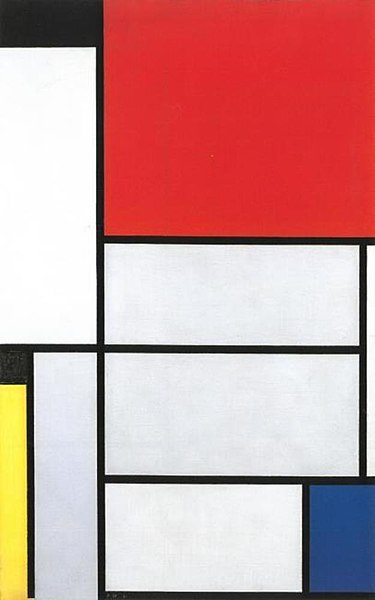
Mondrian, Composition No. II, with Red and Blue 6:03
If you receive an error with the link above, use the following link https://www.khanacademy.org/humanities/art-1010/cubism-early-abstraction/de-stijl/v/mondrian-composition-no-ii-with-red-and-blue-1929
Mondrian and the artist Theo van Doesburg worked together to found the De Stijl movement. They believed that art is an expression of the relationship between art and life. They founded a De Stijl Journal that was and still is influential in the study of art today.
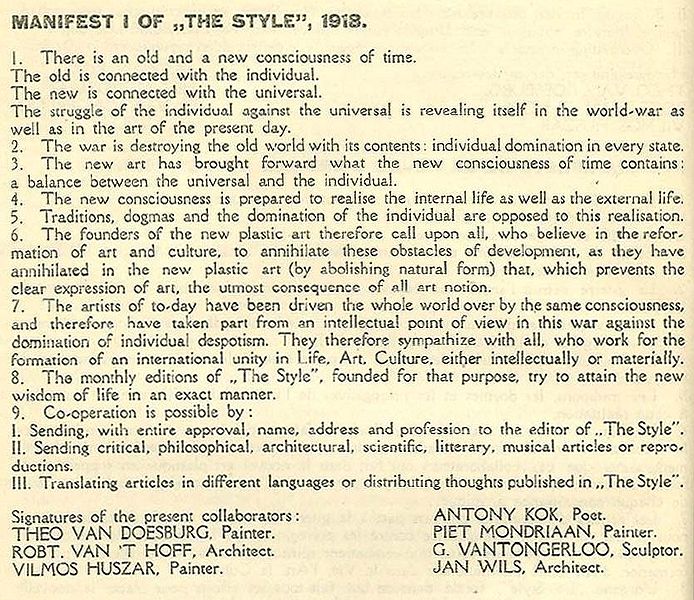
One of Mondrian’s most famous paintings is Broadway Boogie Woogie, which “depicts” a busy cityscape full of roads, stoplights, pedestrians, and traffic.
